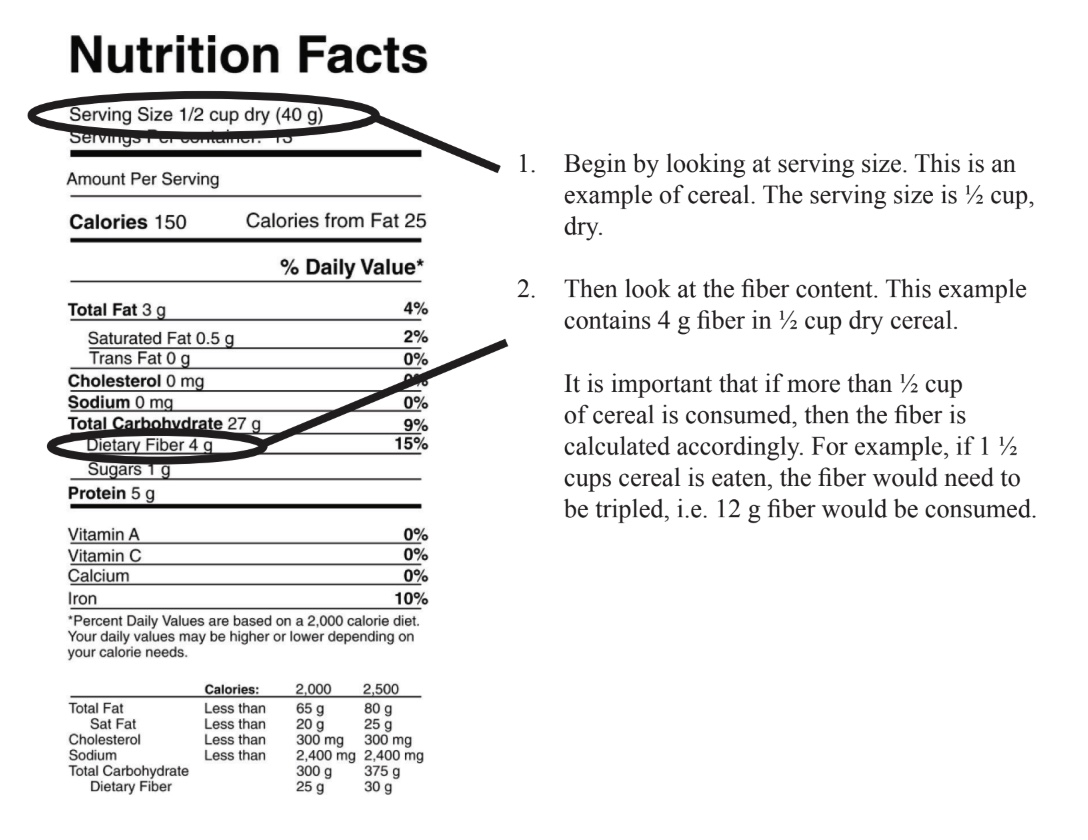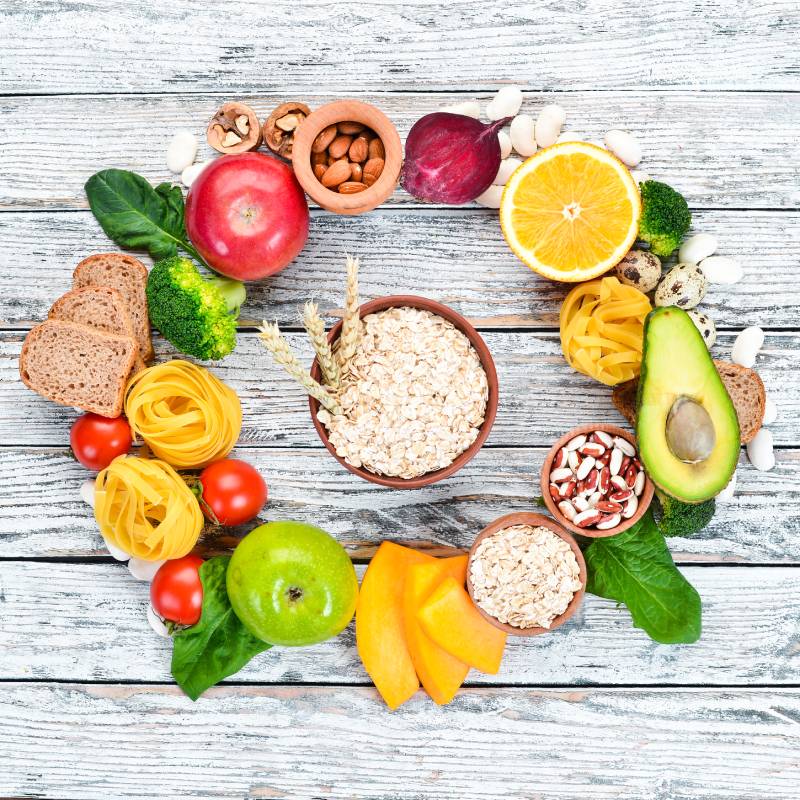Fiber is the term for indigestible plant components. Since fiber is not digestible, it adds bulk to the stool. Fiber absorbs water to soften the stool and keep feces moving. There are two different types of fiber:
- Soluble fiber: forms a gel-like substance in water. This type of fiber will help soften stools. It also helps prevent cholesterol and saturated fats from entering the bloodstream.
- Insoluble fiber: does not dissolve in water and passes through the GI tract mainly intact. This fiber type helps keep bowel
movements regular by bulking up the stool. This also reduces the risk for hemorrhoids and rectal fissures.
The two different types of fiber are commonly found together. For example, an apple is comprised of insoluble fiber in the outer skin, but the inner flesh is comprised of soluble fiber. Both types of fiber are needed for proper bowel function, although some gastrointestinal conditions specifically need different types of fiber.
Fiber is important because it can help reduce constipation and lower blood cholesterol. High fiber diets can also help reduce the risk of colon cancer.
The current recommendations are 25-38 grams of fiber per day. Unfortunately, the average American only eats 10-15 grams fiber per day. The recommended amount of fiber is not specific to insoluble versus soluble fiber, just 25-38 g of total fiber per day.
Fiber is listed on all nutrition facts panels, as seen below. Fiber listed on nutrition facts is not usually broken down into
soluble or insoluble fiber types.

High fiber food sources:
- Fruits
- Apple with skin
- Blackberries
- Prunes
- Raspberries
- Peaches
- Oranges
- Vegetables- raw or cooked
- Corn
- Spinach
- Broccoli
- Cauliflower
- Legumes- all varieties
- Nuts- all varieties
- Cereals/grains
- Whole grain breads
- Brown rice
- Wheat pasta
- Shredded Wheat
- Grape Nuts
- Bran
Supplements with fiber
While fiber supplements are available over-the-counter, they are not always recommended. Concentrated fiber supplements can cause gas, abdominal discomfort, and bloating. Many over the counter supplements have soluble fiber, not insoluble fiber. Increasing natural fiber in the diet is ideal.
If a fiber supplement is used, look for methylcellulose (i.e Citrucel) rather than a synthetic supplement with polycarbophil (i.e Fibercon).
Does a high fiber diet change recommendations in patients with diabetes?
The two types of fiber are helpful in patients with diabetes. Insoluble fiber slows down how fast glucose in absorbed, which may lower blood glucose levels. Soluble fiber minimizes the rise in blood glucose levels after eating. If using fiber supplements, be sure to choose sugar-free options.
Other facts about a high fiber diet:
- Increase total fiber intake slowly. Adding large quantities of fiber too quickly can increase gas, cramping, bloating, and diarrhea. Try adding 2-4 additional grams of fiber each week until the goal amount is reached.
- Drink plenty of water because fiber absorbs the water. Without plenty of water, constipation is possible. Ideally, 6-8 glasses or 48-64 ounces of water should be consumed daily.
- Remember, fiber recommendations can vary for different conditions and some people require less than the recommended amount.
- The easiest way to increase fiber consumption is switching low fiber foods for high fiber alternatives. For example, try replacing a low fiber cereal (Rice Krispies) to high fiber cereal (Shredded Wheat).
- Fiber from different food groups is important, including fruits, vegetables, beans, and grains
Please consider setting up an appointment with our dietitian to discuss strategies to add fiber into your typical daily intake. The dietitian will create realistic recommendations that not only meet your taste preferences, but also your lifestyle.

